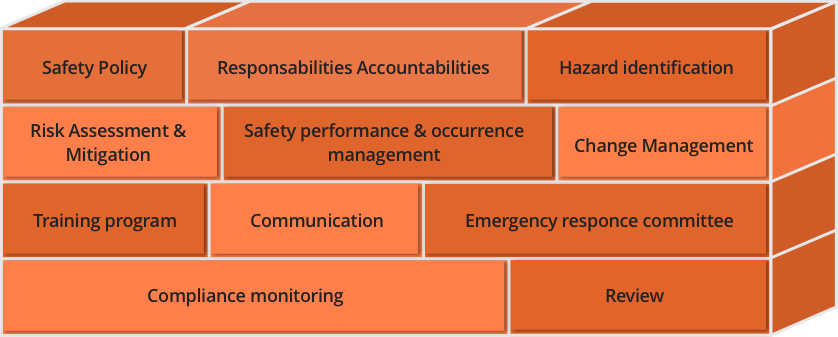Safety principles guide
Safety principles guide
The image below highlights the essential elements of an effective Safety & Compliance Monitoring Management System.

- The Safety Policy: represents ADR's commitment to ensure the safety of operations;
SAFETY POLICY
- Responsibilities Accountabilities: for the definition of different subjects in the airport context that can affect different levels of safety;
- Through a constant monitoring and forecasting of potential circumstances, events or potentially damaging agents, Safety, through the so-called Hazard identification, prevents situations to avoid unforeseen events.
- Risk Assessment & Mitigation analyses the various situations that are occurring or potentially verifiable and, through assessment tools and comparison with historical statistics and data from other airports, formulates preventive actions of an infrastructural or procedural or organizational type;
- ADR engages in continuous prevention activities by periodically surveying the events at the airport. Each event is analysed in order to identify possible deviations of the system from applicable regulations and/or national, procedural, infrastructural and/or organizational lacks. Following the analysis, preventative and/or corrective actions are launched to ensure, as far as possible, that the pertinent event does not occur again;
- All staff working within an airport must be constantly informed about the Safety criteria to be employed to prevent risky events. The Training programme ensures the training of the entire airport community on airside hazards, steering-related training in areas frequented by the aircraft, and on appropriate behaviour to avoid causing damage to aircraft and passengers;
- The training of airport operators occurs also through appropriate vehicles of communication, by targeted and periodically published campaigns.
European Aviation Safety Agency





